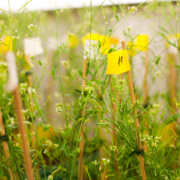Dissection of miRNA pathways using protoplasts
Mol Plant. 2014 Oct 24. pii: ssu119. [Epub ahead of print]
Dissection of miRNA pathways using Arabidopsis mesophyll protoplasts.
Martinho C, Confraria A, Elias CA, Crozet P, Rubio-Somoza I, Weigel D, Baena-González E.
microRNAs (miRNAs) control gene expression mostly post-transcriptionally by guiding transcript cleavage and/or translational repression of complementary mRNA targets, thereby regulating developmental processes and stress responses. Despite the remarkable expansion of the field, the mechanisms underlying miRNA activity are not fully understood. In this paper, we describe a transient expression system in Arabidopsis mesophyll protoplasts that is highly amenable for the dissection of miRNA pathways. We show that by transiently overexpressing primary miRNAs and target mimics, we can manipulate miRNA levels and consequently impact on their targets. Furthermore, we developed a set of luciferase-based sensors for quantifying miRNA activity that respond specifically to both endogenous and overexpressed miRNAs and target mimics. We demonstrate that these miRNA sensors can be used to test the impact of putative components of the miRNA pathway on miRNA activity, as well as the impact of specific mutations, either by overexpression or by the use of protoplasts from the corresponding mutants. We further show that our miRNA sensors can be used for investigating the effect of chemicals on miRNA activity. Our cell-based transient expression system is fast and easy to set up and generates quantitative results, being a powerful tool for assaying miRNA activity in vivo.



